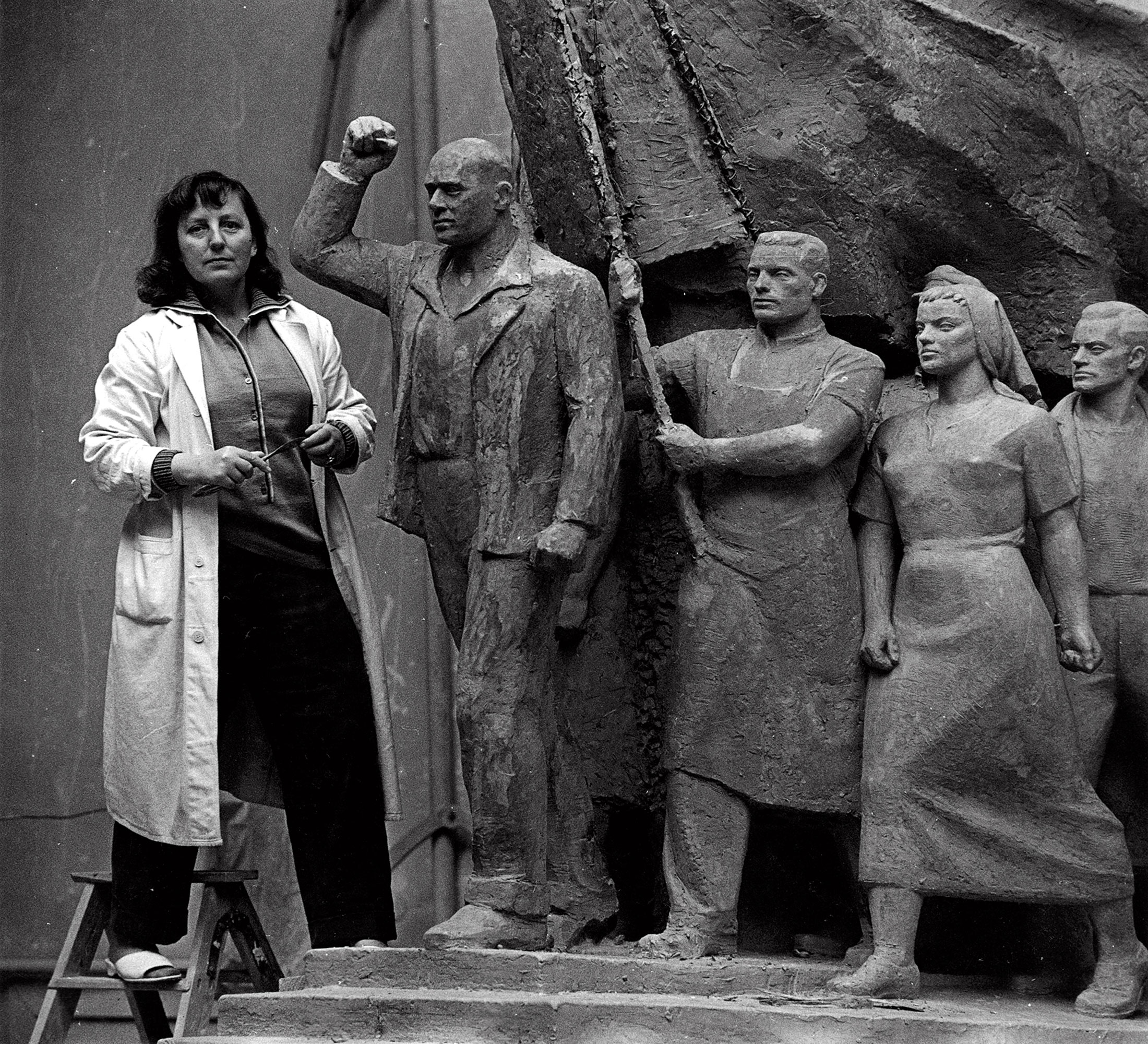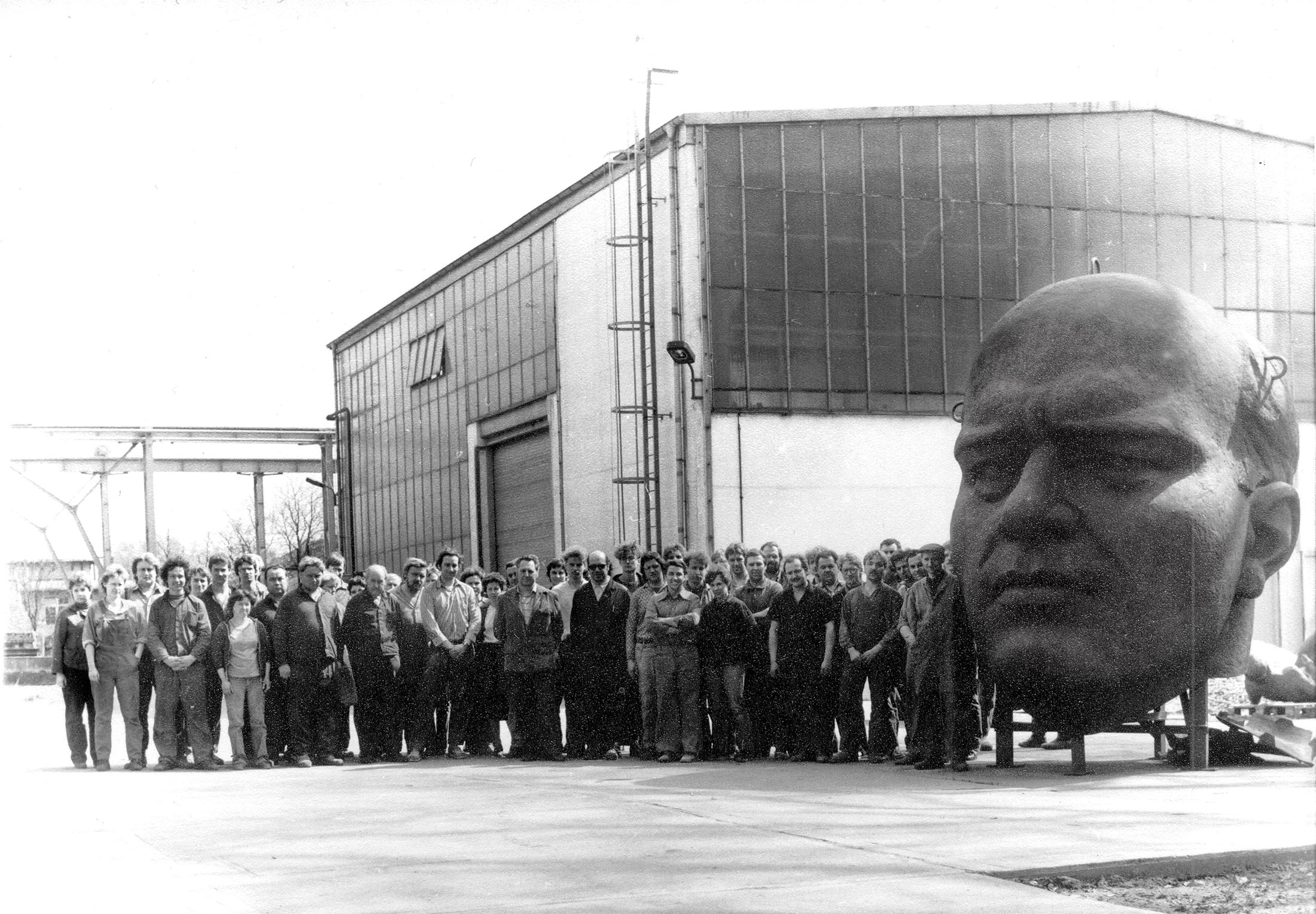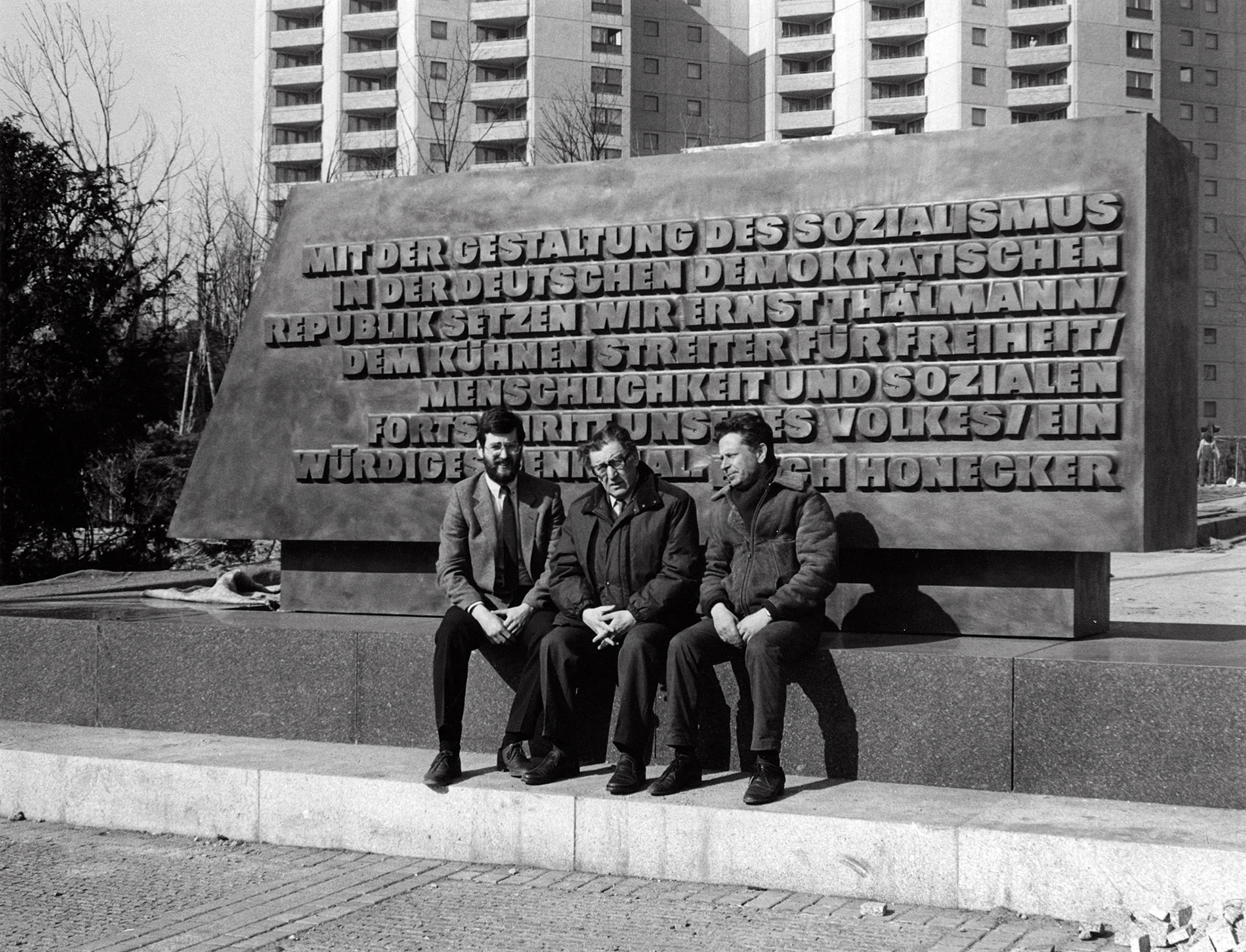Historical Critical Commentary on the Ernst Thälmann Monument
The History of the Monument
A few weeks after the founding of the German Democratic Republic (GDR), the first competition for the creation of a monument to Ernst Thälmann at Thälmannplatz (Wilhelmplatz) in Berlin was announced. As a result of the competition, the artist Ruthild Hahne worked on the project until 1965. After the wall was built in 1961, the planned location was abandoned because of its proximity to the state border. More plans and designs followed but remained inconclusive. A decision by the X Party Congress of the Socialist Unity Party of Germany (SED) in 1981 put the project for a monument on the agenda again, now in Ernst Thälmann Park.

Museum Pankow
The monument was intended to form the centre of the residential ensemble and the park. The General Secretary of the Socialist Unity Party (SED), Erich Honecker, commissioned the Soviet sculptor Lew Kerbel (1917 – 2003), who was known for monumental sculptures such as the Karl Marx Monument in Chemnitz. He had also created the monumental sculpture of the Red Army soldier for the Soviet Memorial in Berlin-Tiergarten in 1945. Designs by artists from the GDR for the Thälmann monument were not considered. The Association of Fine Artists of the GDR and many artists reacted with protest. They criticised the traditional conception of the monument and their own lack of participation in the planning and selection of the artwork.

Museum Pankow
The erection of the monument in the mid-1980s can be seen as a symbol of the situation in the GDR. The urban planning concept presented the monument centrally in front of the large (parade) square. It was flanked on the right and left by two bronze columns with inscriptions by Erich Honecker and Ernst Thälmann. The residential buildings behind it served as a backdrop. In opposition to perestroika and emerging democratisation efforts, the memorial demonstrated the GDR leadership‘s claim to power and its resistance to socio-political transformation.

Museum Pankow